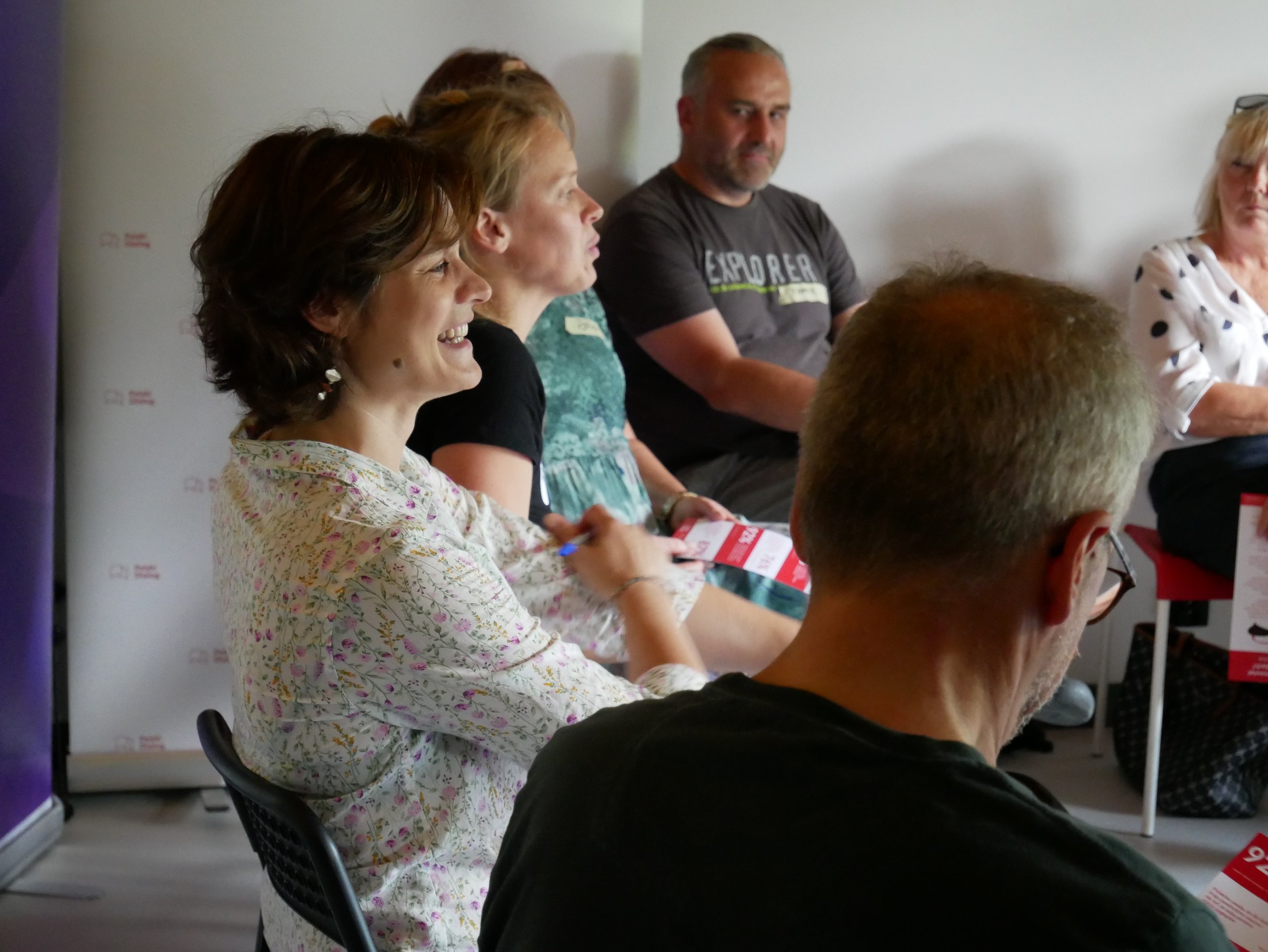Step 4:
Conduct your first dialogue
Unlike participatory processes, the goal of a dialogue is not decision-making or finding specific solutions. A dialogue occurs when people deeply listen, share perspectives through personal stories, needs, and values rather than exchange arguments. Dialogues reduce hostility toward individuals with different views and foster a sense of community. To achieve this purpose facilitators conduct the conversation in a certain way. Here is an overview of their most-frequently used techniques:
In contrast to debates and discussions, a dialogue does not aim to persuade others to adopt a particular point of view.
During a dialogue participants engage in active listening and paraphrasing to ensure mutual understanding and validation. To model that facilitators reflect on what they've heard, often starting with phrases like "Did I understand correctly that...". This technique fosters a sense of connection and empathy among participants as they strive to grasp each other's perspectives.
Central to the dialogue is the exploration of needs and values. Facilitators ask about the significance of certain topics or viewpoints by asking, "Why is this important to you?". This question delves into the underlying motivations and beliefs driving each participant's engagement with the topic.
Acknowledging emotions is key to fostering a supportive and inclusive dialogue environment. Participants are encouraged to express their feelings openly, with prompts like, "How do you feel when you hear this?". This encourages empathy and understanding, especially when dealing with differing viewpoints.
Practicing curiosity drives the dialogue forward, inviting participants to explore intriguing aspects of others' statements. They inquire, "What intrigued you in others' statements? What do you want to inquire about or refer to?". This cultivates a spirit of exploration and encourages active engagement with diverse perspectives.
Encouraging the expression of different perspectives is essential for enriching the dialogue. Participants are invited to reflect on potential surprises, annoyances, or emotional reactions they may have experienced. Facilitators ask "Did anything surprise, annoy, or touch you here?". This invitation fosters an atmosphere of openness and encourages participants to consider alternative viewpoints.
Problems you might encounter when you start a dialogue:
The conversation drifts towards an intellectual debate rather than a lively exchange of experiences.
It is sometimes easier to discuss theories, facts, or other people's experiences than to share our own thoughts. If you feel the conversation is heading in this direction, the facilitator should ask why what someone is sharing is important to them. This way, you can invite an individual perspective into the room. With time participants can start asking such questions themselves.
One person dominates the room.
In situations where one person dominates the space, facilitators should assert their role – remind everyone of their right to interrupt and the collective responsibility for the situation. You can stress the importance of listening during the dialogue.
There is a tension between participants holding opposing views.
Dialogue do not serve to erase differences but to learn to talk about them, and through that, to better understand and accept one another. If the atmosphere is getting too heated, facilitators can stop it and ask questions which can help participants reflect on what drives their emotions.


